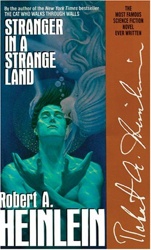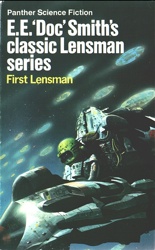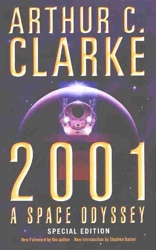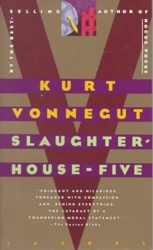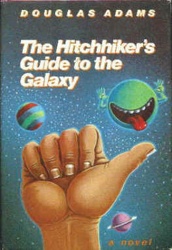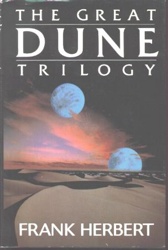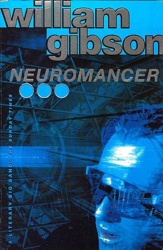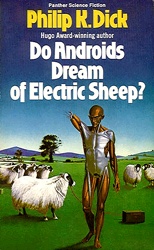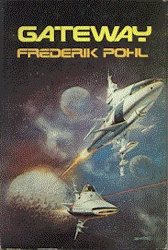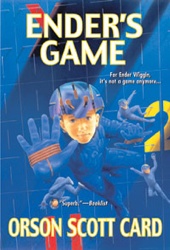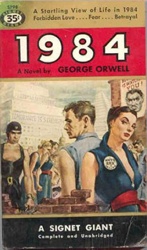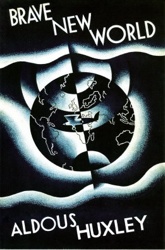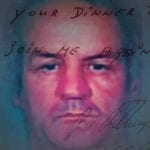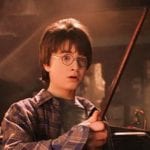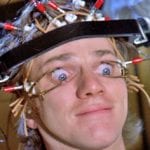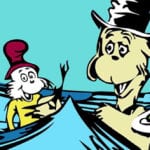 Weird Stuff
Weird Stuff  Weird Stuff
Weird Stuff  History
History 10 Legends Whose Last Moments Undid Their Glory
 Health
Health 10 Futuristic Ideas to Treat Common Medical Problems
 Weird Stuff
Weird Stuff Ten Surreal Attempts to Reverse Baldness
 Facts
Facts 10 U.S. Government Contingency Plans for the Unthinkable
 History
History 10 Weird Distractions from the Great Depression
 Movies and TV
Movies and TV 10 Fictional Kings Who Go from Good to Bad
 Food
Food The Fantastic Chemistry Behind Why 10 Popular Foods Taste So Good
 Technology
Technology 10 Futuristic Fungal Technologies
 History
History 10 Not-so-Spooky Events That Also Happened on October 31
 Weird Stuff
Weird Stuff 10 Things So Rare They’ve Only Been Found Once
 History
History 10 Legends Whose Last Moments Undid Their Glory
 Health
Health 10 Futuristic Ideas to Treat Common Medical Problems
Who's Behind Listverse?

Jamie Frater
Head Editor
Jamie founded Listverse due to an insatiable desire to share fascinating, obscure, and bizarre facts. He has been a guest speaker on numerous national radio and television stations and is a five time published author.
More About Us Weird Stuff
Weird Stuff Ten Surreal Attempts to Reverse Baldness
 Facts
Facts 10 U.S. Government Contingency Plans for the Unthinkable
 History
History 10 Weird Distractions from the Great Depression
 Movies and TV
Movies and TV 10 Fictional Kings Who Go from Good to Bad
 Food
Food The Fantastic Chemistry Behind Why 10 Popular Foods Taste So Good
 Technology
Technology 10 Futuristic Fungal Technologies
 History
History 10 Not-so-Spooky Events That Also Happened on October 31
Top 15 Great Science Fiction Books
There are so many astounding science fiction books out there that this has been one of the hardest lists for me to put together. I have added and culled but finally I have a list of the most important 15 Science Fiction Books of all time. I realise that not everyone will be satisfied with this list – so please use the comments to add the books that I couldn’t due to space and time. In no particular order…
1. The Time Machine H G Wells
The Time Machine was first published in 1895, making it the oldest book on this list. Considered by many to be one of the greatest science fiction novels of all time, this book coined the term “Time Machine” which is almost exclusively used to refer to any device that allows humans to move through time. The book’s main character is an amateur inventor who lives in London. He is never identified, instead being referred to simply as “The Time Traveller”. Having demonstrated to friends that time is a fourth dimension, and that a suitable device can move back and forth in this fourth dimension, he completes the building of a larger machine capable of carrying himself. He immediately sets off on a journey into the future.
You’ve read the books, now watch the movies! Get the Sci-Fi Classics 50 Movie Pack at Amazon.com!
2. Stranger in a Strange Land Robert Heinlein
Stranger in a strange land tells the story of Valentine Michael Smith, a human raised by Martians on the planet Mars, upon his return to Earth in early adulthood. The novel explores his interaction and transformation of Earth culture. Typically of Heinlein, this book cover a variety of human taboos, including homosexuality, nudism, and cannibalism. The book introduces the character of Jubal Harshaw who is a central figure in many later books by Heinlein. It won the 1969 Hugo award and has not been out of print since the first publication. Eventually Stranger in a Strange Land became a cult classic, attracting many readers who would not normally have read a work of science fiction.
3. The Lensman Series E E “Doc” Smith
I remember one summer in my childhood when all the other kids were busy hanging out at the movies and playing video games, that I spent every day lying in the backyard all day reading every book that E E Smith wrote (luckily my dad is a keen Sci-Fi fan so he had them all). Doc Smith was my introduction to Science Fiction – and what an introduction it was! The Lensman series was the first set of science fiction novels conceived as a series. It was also the original source which introduced many innovative concepts into science fiction, and a variety of ideas newly introduced in the series later were taken and used to solve non-fictional problems. In this sense the series was ground-breaking and defined an entire genre.
4. 2001 – A Space Odyssey Arthur C Clarke
Interestingly, this book was developed concurrently with Stanley Kubrick’s film and published after the release of the movie. In the background to the story, an ancient and hidden alien race uses a mechanism with the appearance of a large crystal Monolith (black in the film) to investigate worlds all across the galaxy and to encourage the development of intelligent life. This novel was followed by three others: 2010 (also made into a movie), 2069, and 3001. As yet no plans exist for the remaining two to be made in to films.
5. Fahrenheit 451 Ray Bradbury
The novel presents a future in which all books are banned and critical thought is suppressed. The central character, Guy Montag, is employed as a “fireman” (which, in this case, means “book burner”). 451 degrees Fahrenheit is stated as “the temperature at which book-paper catches fire, and burns …” It was originally published as a shorter novella, The Fireman, in the February 1951 issue of Galaxy Science Fiction. Fahrenheit 451 takes place in an unspecified future time in a hedonistic and rabidly anti-intellectual America that has completely abandoned self-control and bans the possession of books. People are now only entertained by in-ear radio and an interactive form of television. The protagonist, Guy Montag, is a fireman, certain that his job—burning books, and the houses that hold them, and persecuting those who own them—is the right thing to do.
6. The Foundation Series Isaac Asimov
The term ‘Foundation Series’ is often used to include the Robot Series and Empire Series, which are set in the same fictional universe. In total there are fourteen novels and dozens of short stories written by Asimov, and six novels written by other authors after his death. The series is highly acclaimed, deservedly winning the one-time Hugo Award for “Best All-Time Series” in 1965. The premise of the series is that scientist Hari Seldon spent his life developing a branch of mathematics known as psychohistory, a concept devised by Asimov. Using the law of mass action, it can predict the future, but only on a large scale; it is error-prone for anything smaller than a planet or an empire. Using these techniques, Seldon foresees the fall of the Galactic Empire, which encompasses the entire Milky Way, and a dark age lasting thirty thousand years before a second great empire arises. These books are captivating and if you start book one, you won’t stop until you finish book fourteen.
7. Slaughterhouse-Five Kurt Vonnegut
Slaughterhouse-Five; or, The Children’s Crusade: A Duty-Dance With Death is a 1969 novel by Kurt Vonnegut. Widely regarded as a classic, it combines science fiction elements with an analysis of the human condition from an uncommon perspective, using time travel as a plot device and the bombing of Dresden in World War II, the aftermath of which Vonnegut witnessed, as a starting point. A disoriented and ill-trained American soldier named Billy Pilgrim is captured by German soldiers and is forced to live in a makeshift prison. Billy has become “unstuck in time” for unexplained reasons so he randomly and repeatedly visits different parts of his life, including his death. He meets, and is later kidnapped by, aliens from the planet Tralfamadore, who exhibit him in a Tralfamadorian zoo with Montana Wildhack, a pornographic movie star.
8. The Hitchhikers Guide to the Galaxy Douglas Adams
The Hitchhiker’s Guide to the Galaxy is a science fiction comedy series created by Douglas Adams. The series follows the adventures of Arthur Dent, a hapless Englishman who, with his friend Ford Prefect, an alien from a small planet somewhere in the vicinity of Betelgeuse, escapes the demolition of Earth by a bureaucratic alien race called the Vogons. Zaphod Beeblebrox, Ford’s semi-cousin and part-time Galactic President, unknowingly saves the pair from certain death. He brings them aboard his stolen spaceship, the Heart of Gold, whose crew rounds out the main cast of characters: Marvin, the Paranoid Android, a depressed robot, and Trillian, formerly known as Tricia McMillan, a woman Arthur once met at a party who he soon realises is the only other survivor of Earth’s destruction. After this, the characters embark on a quest to find the legendary planet of Magrathea and the Question to the Ultimate Answer.
9. Dune Frank Herbert
Dune is a science fiction novel written by Frank Herbert and published in 1965, and is frequently cited as the best-selling science fiction novel in history. Dune is set far in the future amidst a sprawling feudal interstellar empire where planetary fiefdoms are controlled by noble Houses that owe allegiance to the Imperial House Corrino. The novel tells the story of young Paul Atreides as he and his family relocate to the planet Arrakis, the only source of the spice melange, the most important and valuable substance in the universe. In a story that explores the complex interactions of politics, religion, ecology, technology, and human emotion, the fate of Paul, his family, his new planet and its native inhabitants, as well as the Padishah Emperor, the powerful Spacing Guild, and the secretive female order of the Bene Gesserit, are all drawn together into a confrontation that will change the course of humanity.
10. Neuromancer William Gibson
This ’80s novel caused a sensation when it was published. Set in a near-future world, this novel helped to popularize the cyberpunk genre. The novel uses visual power and imagery it’s predecessors were not able to achieve. The main character of Neuromancer is Case, a console cowboy, who, by linking his brain directly with computers, pirates data kept in the cyberspace matrix. This is simulated by a worldwide database with a crippled nervous system. With the aid of Molly (who has concealed cybernetic weapons), they embark on a violent adventure.
11. Do Androids Dream of Electric Sheep? Philip K Dick
Published in 1968, this novel, even today, is years ahead of its time. Set in the future, the World War had obliterated millions with entire species extinct. This causes the humans to look for a new home planet. However, large corporations build artificial animals, which look extremely realistic, and are successful in creating artificial humans, used for slave labor. This causes great fear amongst the human population and the androids are subsequently banned. The androids are on the run, and Rick Deckard is brought in to hunt down the escapees to “retire” them. This book was the inspiration for Blade Runner.
12. Gateway Frederik Pohl
Winner of both the Hugo, and Nebula Awards, Gateway is the story of the ultimate futuristic goldrush! Set in the 21st century, Gateway – a large asteroid – has been found; containing hundreds of ancient space ships. All of these ships have pre-programmed courses set. Little is known about the builders of these ships, the Heechee. The curious humans explore the destinations that are preset which result in either vast wealth, or death. The two main characters are Robinette Broadhead, who becomes a prospector, and Sigrid, his digital psychotherapist. Much of the novel consists of Broadhead’s conversation with Sigrid, interspersed with his memories of Gateway and the journeys he has taken in the Heechee ships. A slow moving thinking person’s novel which builds to an amazing crescendo.
13. Ender’s Game Orson Scott Card
Taken from home at the tender age of 7, surrounded by enemies, with no hope and impossible odds, he is Earth’s last hope. Ender excels in the field of combat. The invasion of the alien insects ‘buggers’ looms over the Earth. Ender is put to the test when he leads Earth’s defensive and retailitory attack against the aliens. The dialogue, visuals, and details bond you to the characters and make this story incredible.
Don’t miss Orson Scott Card’s latest installment in the Ender universe—the taught Sci-Fi thriller Earth Awakens (The First Formic War) at Amazon.com!
14. 1984 George Orwell
George Orwell wrote 1984 a year before his death to show the world the grim and bleak future of a society subject to totalitarianism. It’s a disturbing and chilling story of Big Brother, where sex is frowned upon and only to be used for reproductive purposes. It was written in 1949, four years after the end of WWII and the paranoia and fear that arose from that time, as well as the threat of communism, gave birth to 1984. In the novel the world has been grouped into three opposing forces: Oceania, Eurasia, and Eastasia. Winston Smith, of Oceania, is living in London, a society where you are monitored constantly through telescreens which are in every room. Even if you are physically alone, you are always being watched and individualism is forbidden. The government provides the ‘entertainment’: movies and music. Crime is monitored by the Thought Police, an elite and secretive government organization that can erase you and all records of your existence.
15. Brave New World Aldous Huxley
Huxley is one of my favourite writers. Brave New World is set in a dystopian future which anticipates developments in reproductive technology, biological engineering, and sleep-learning that combine to change society. The world the novel describes is a utopia, though an ironic one: humanity is carefree, healthy and technologically advanced. Warfare and poverty have been removed and everyone is permanently happy. The irony is that all of these things have been achieved by eliminating many things that humans consider to be central to their identity — family, culture, art, literature, science, religion, and philosophy. It is also a hedonistic society, taking pleasure from promiscuous sex and drug use, especially the use of soma, a powerful drug taken to escape pain and bad memories through hallucinations.
I must, of course, give a tip of the hat to Jules Verne who should be on the list but I just couldn’t decide who to cut in his favor.
Contributors: Ryan Sweeney, and Fritha Keith

